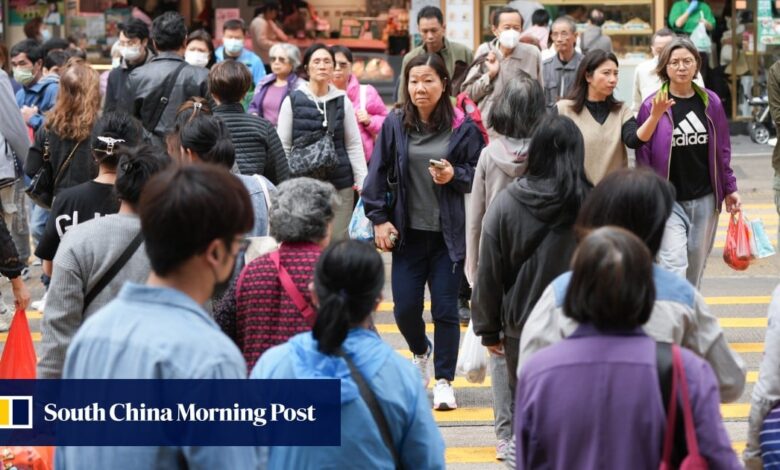Heytea snaps up Mong Kok space as mainland Chinese brands step up Hong Kong expansion

Mainland Chinese brands have been the most aggressive non-local entrants into the Hong Kong retail market so far this year, as lower rents entice popular chains – especially sellers of food and drink – to take a shot at establishing themselves in the city.
New Hong Kong leases by mainland Chinese brands grew by 215 per cent year on year in the first seven months of 2024, according to JLL. Among the mainland brands that expanded, 56 per cent chose to locate in high streets, while others set up shops in prime shopping centres, the property consultancy added.
As for the origins of the non-local brands expanding in Hong Kong, mainland China accounted for 35 per cent, followed by Japan (29 per cent), Taiwan (15 per cent) and South Korea (13 per cent), JLL said.
“With the continual growth of inbound tourism, we anticipate more mainland brands will enter the Hong Kong market,” said Cathie Chung, senior director of research at JLL. “Recognising Hong Kong’s crucial role as a gateway, these brands are strategically leveraging the opportunity to expand their presence in the global market.”
Brands offering light refreshments such as noodles, tea drinks, desserts and Chinese food made up most new market entrants, she added.
The outlet will be located on Soy Street at one of the busiest junctions in the area, which is famous for its dense foot traffic. The store will occupy 979 sq ft with a monthly rent of HK$160,000 (US$20,527). It was formerly occupied by a shoe retailer, reports said. Heytea did not immediately reply to a request for comment.
The chain, backed by Tencent Holdings and Singapore’s Temasek, opened its first outlet in Hong Kong in 2018 and now has 10 branches, according to a Google search.
Founded in 2012 in Shenzhen, Heytea has been aggressively expanding beyond its home market. It now has more than 4,000 stores in more than 300 cities in China and globally, including the US, the UK, Australia, Canada, Singapore, Malaysia and South Korea.

From 2021 to 2023, the brand’s top product – jasmine green tea with grapes and optional whipped cheese topping – sold more than 117.7 million cups, according to its website.
Hong Kong’s retail segment is seeing profound changes as residents spend more online and overseas while the city attracts fewer mainland Chinese visitors who are splurging less than in previous years.
As of June, outbound travel by the city’s population had exceeded 2018 levels on an annualised basis, according to S&P.
Hong Kong is targeting 46 million visitors this year, an increase of 35 per cent compared with 2023 but equal to just 70 per cent of the record 65 million tourists who came in 2018, according to a government forecast. Meanwhile, estimated spending per overnight visitor is expected to shrink by as much as 16.4 per cent to HK$5,800 this year, from HK$6,939 in 2023.
Tourist spending typically accounts for 30 per cent of overall retail sales in the city, and mainland China tourists make up 80 per cent of all tourist contributions, according to real estate broker CBRE.
Retail sales fell 9.7 per cent in June to HK$29.9 billion compared with a year ago, according to a provisional estimate by the Census and Statistics Department. In the first six months of the year, total retail sales declined 6.6 per cent year on year.
Source link



